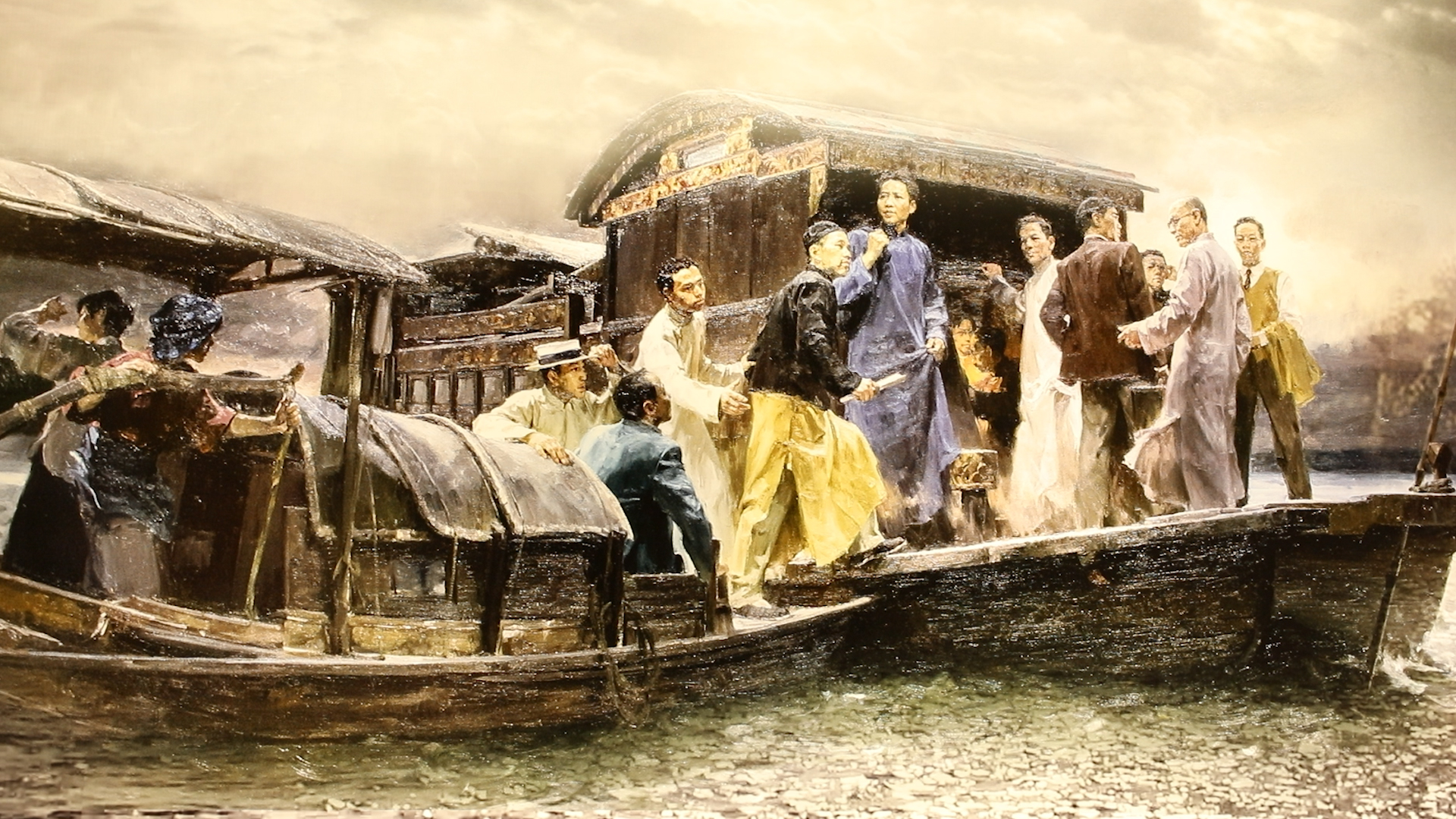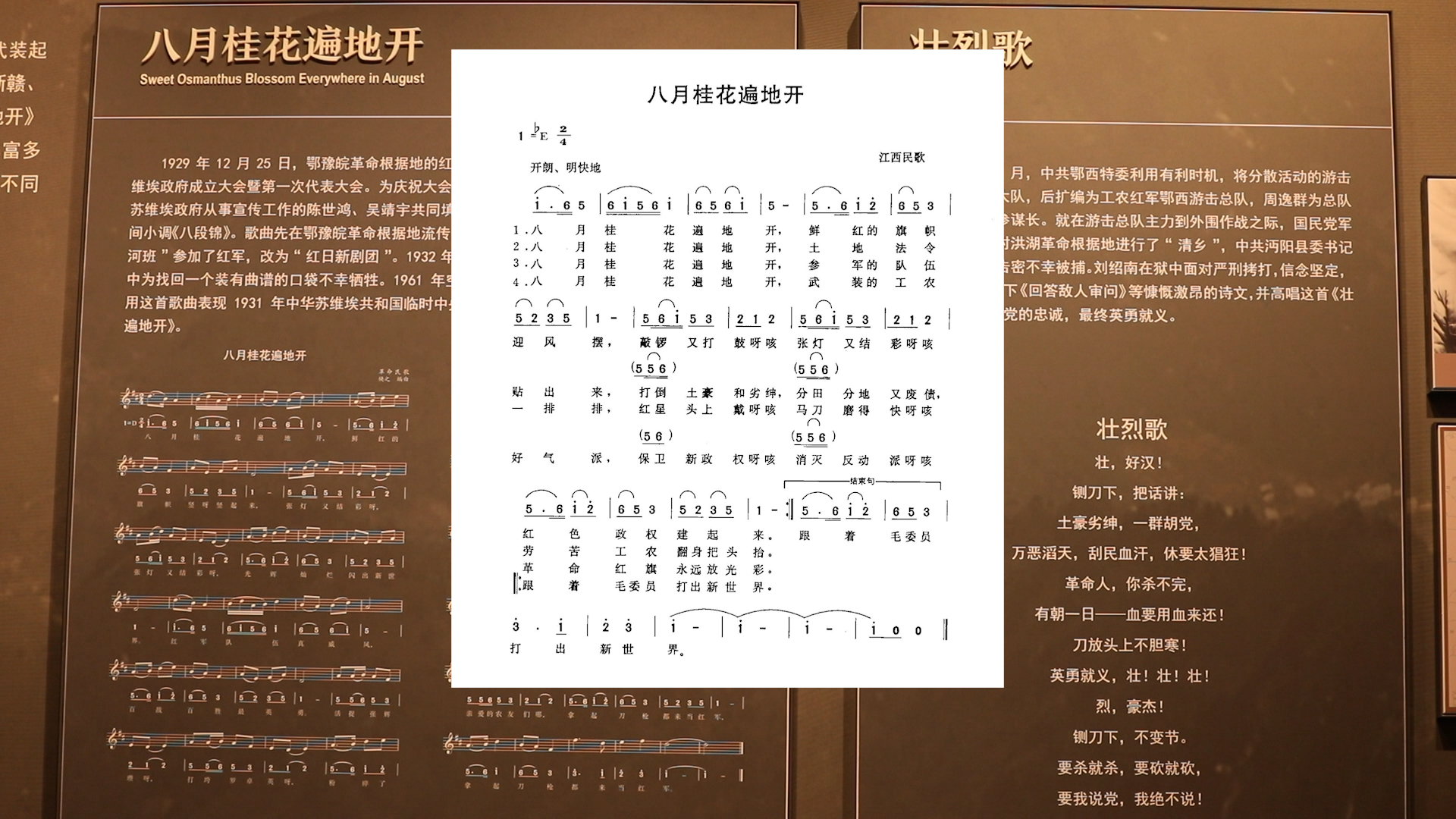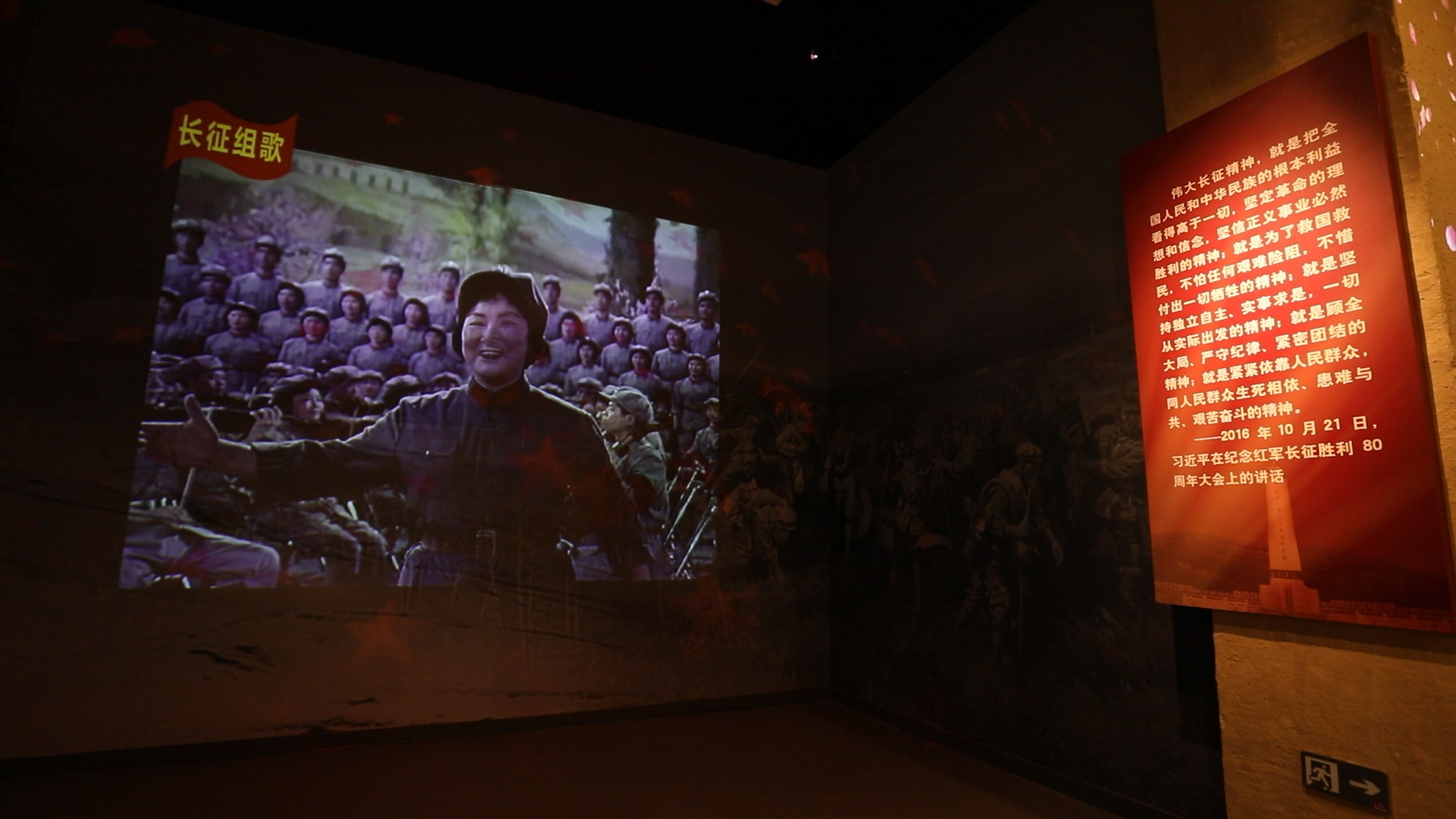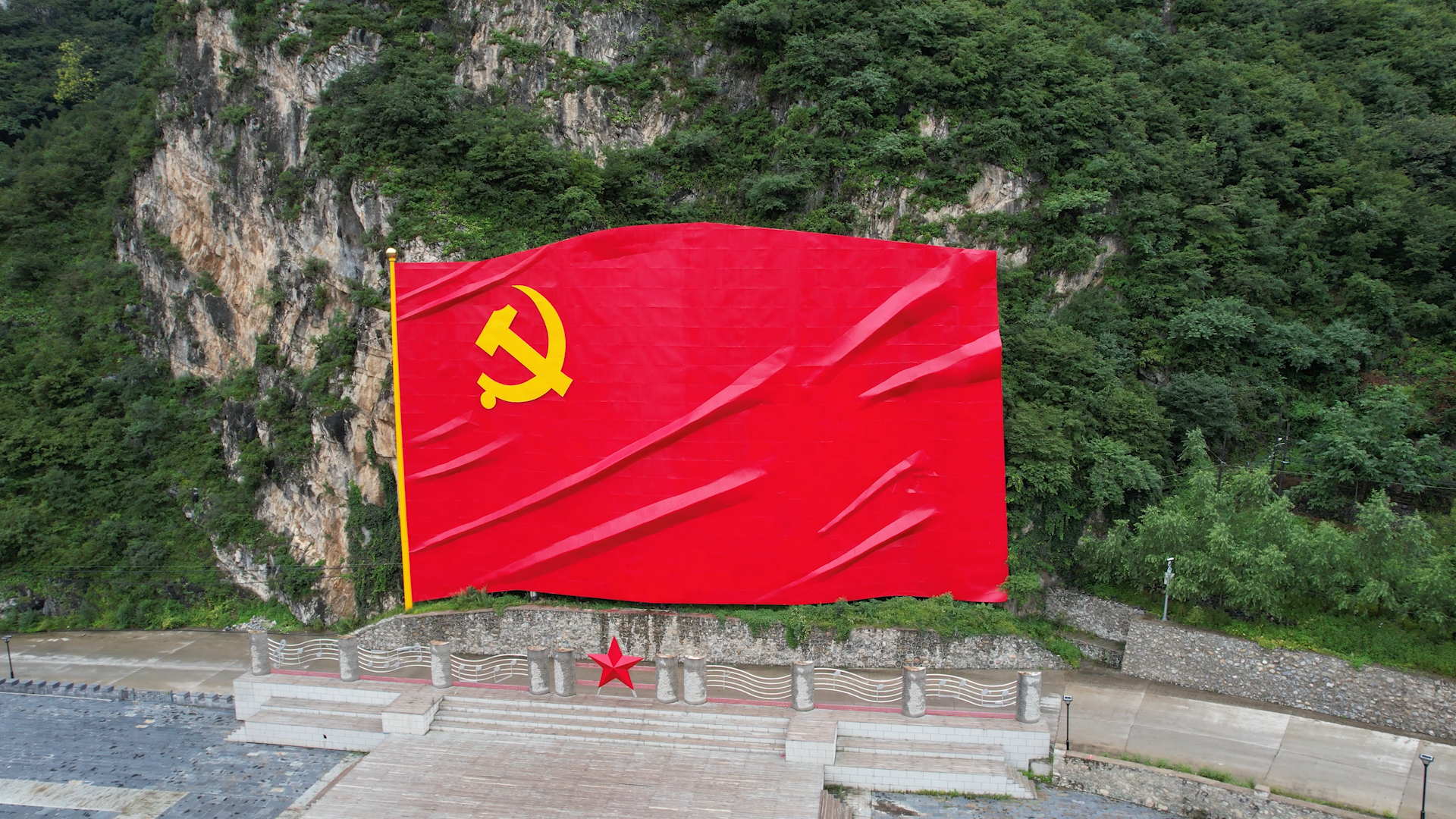紅歌:人民的心聲 歷史的旋律
紅歌:人民的心聲 歷史的旋律
Red songs: Telling history through music
世界上每個民族的每段歷史,總有音樂作為記錄。在近百年來的中國,有這樣一種特殊的歌曲——紅色革命歌曲,凝聚著中華民族從危亡走向新生,再邁向輝煌的厚重歷史。
Each nation in the world has music recording its different historic eras. China is no exception. During its recent one hundred years, a special type of songs – the red revolutionary songs - reflect the part of history as the Chinese nation in peril was reborn and marched to glory.

1921年,中國共産黨第一次全國代表大會在浙江嘉興南湖的一條船上召開,翻開了中國革命新的一頁。1984年,張士燮、喬羽、時樂蒙共同創作了歌曲《南湖的船,黨的搖籃》,南湖的船,承載著“立黨為公、忠誠為民的奉獻精神”,被譽為黨的搖籃。
In 1921, the Communist Party of China (CPC) held its first national congress on board a boat on Lake Nanhu in Jiaxing, Zhejiang province, marking a new beginning of the Chinese revolution. In 1984, Zhang Shixie, Qiao Yu and Shi Lemong jointly wrote the song the Boat on Nanhu Lake, the Cradle of the CPC. The small boat embodies the CPC’s commitment to serving the public good and exercising power in the interests of the people, therefore, becoming an icon in the history of the CPC.
1927年,中國共産黨發動南昌起義,打響了武裝反抗國民黨反動統治的第一槍。這一聲槍響,標誌著中國從此有了一支為人民求解放、謀福利的人民軍隊。南昌起義不久後,南昌傳出一首《八一起義》的民謠,老百姓唱出“我快活笑嘻哈!”,表達了對起義的擁護。
In 1927, the CPC launched the Nanchang Uprising and fired the first shots of armed resistance against the reactionary rule of the Kuomintang. This led to the creation of an army that worked for the liberation and wellbeing of Chinese people. Shortly after the uprising, a folk song August 1st Uprising spread from the city of Nanchang. With lyrics like “I laughed merrily,” the song expresses ordinary people’s support for the uprising.

隨後幾年,中國共産黨在全國多地建立了革命根據地。《八月桂花遍地開》是一首源自革命根據地大別山的民歌,採用民歌《八段錦》的曲調,為當地軍民所喜聞樂見。後來,這首歌伴隨著紅軍的足跡傳遍了大江南北。
In the following years, the Communist Party of China established revolutionary bases in many parts of the country. One such revolutionary base in Dabie Mountains provided inspiration for a song titled Sweet Osmanthus Blooming Everywhere in August which adopted the melody of a folk song and became very popular among local army men and civilians. The Red Army later marched across the country to the accompaniment of the song.

1934年10月至1936年10月,中國工農紅軍進行了史無前例的長征。《紅軍戰士思念毛澤東》《渡金沙江勝利歌》《到陜北去》等歌曲以藝術的形式再現了長征艱難的歷程。
The two years from October 1934 to October 1936 witnessed the unprecedented Long March, a military retreat undertaken by the Chinese Workers’ and Peasants’ Red Army to evade the pursuit of the Kuomintang army. The difficult journey was later brought to life by such songs as The Red Army Soldiers Think of Mao Zedong, Ode to the Victory of Crossing the Jinsha River, and Go to Northern Shaanxi.
1935年,陜甘革命根據地形成,為中共中央、中央紅軍提供了落腳點。這一帶,信天遊、花兒風格的曲目獨樹一幟。歌曲《山丹丹開花紅艷艷》以陜甘民歌作為表現形式,“滾滾的米酒捧給親人喝,知心的話兒飛出心窩窩”,歌詞深情、曲調高亢。同時描繪了一段重要的革命歷史——中央紅軍到達陜北,從此之後,中國革命的重心從南方移到了西北。
In 1935, the Shaanxi-Gansu Revolutionary Base was established, providing a secure foothold for the CPC Central Committee and the Central Red Army. This part of the country is noted for Xintianyou and Hua’er, two popular folk tunes. The song Red Morningstar Lilies Are in Blossom uses the Shaanxi and Gansu folk tune as its form of expression. "With warm rice wine we treat the people we love, and together we have straight from the heart chats…” read the lyrics. The words are touching and the singing is sonorous. At the same time, the song depicts an important moment in China’s history: With the arrival of the Central Red Army in northern Shaanxi, the focus of the Chinese revolution shifted from south China to the northwest.

1943年,中國正遭遇日軍侵略,但已見到勝利的曙光。19歲的曹火星來到堂上村開展群眾文藝活動進行抗日宣傳。在這段時間,他創作的歌曲《沒有共産黨就沒有中國》唱出了廣大人民的心聲,並隨著抗戰勝利傳遍全中國。新中國成立後,毛澤東主席提出應該在“中國”前面加一個‘新’字,後來,這首歌的名稱也就正式定為《沒有共産黨就沒有新中國》。
In 1943, the Chinese people were still suffering from the Japanese invaders, but victory was on the horizon. Cao Huoxing, then 19 years old, was working at Tangshang village to raise local residents’ awareness about the anti-Japanese war through mass cultural activities. During this period of time, he created the song titled Without the Communist Party There Would Be No China, which resonated with masses and soon became a household name when China won the war of resistance against Japanese aggression. After the founding of the People's Republic of China, Chairman Mao Zedong proposed that the word "new" should be added before "China." The song was therefore officially renamed as Without the Communist Party There Would Be No New China.

紅歌裏有民謠民歌,有詩詞故事,它被不同地域、不同時代的人們傳唱,唱出了人民的心聲和歷史的旋律。
Red Songs take different forms including folk songs and ballads, poetry and stories. They are popular in different regions and among different generations of people. They represent the common aspirations of the Chinese people and the rhythms of history.









